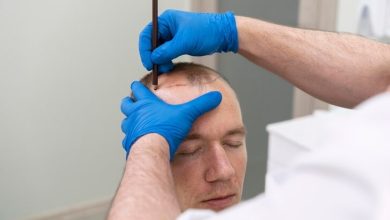10 Exercise Tips For Pain Relief

Almost everyone suffers lower back discomfort at some point in their life. You used to be advised to rest your back when it “played up” in the past; now it is recommended to keep exercising. In order to be successful, you must perform appropriate activities. We are not advocating running or moving large objects; that would not be a good idea. You can, however, do a number of excellent exercises to ease lower back pain. Hansaplast India provides various types of plasters for body pain and back pain. These plasters also help in pain relief.
Lower back pain exercises are really gentle, but as always, pay attention to your body and stop if you feel any discomfort. In general, the exercises relieve tight muscles and strengthen weak muscles, which are the cause of lower back discomfort. Physical therapists are well qualified to treat lower back discomfort for a variety of reasons.
Exercise Tips
- Select activities you enjoy; think about including some aerobic exercise in your program.
- Accept and tolerate some discomfort with activity; modify activities that cause pain to worsen.
- Start slowly and remain consistent throughout the day; don’t do more on good days and less on bad days.
- Use roll-on pain relief for fast recovery.
- Increase exercise volume before intensity; flare-ups reflect a protective strategy rather than an indication of damage.
- Lower your activity levels, stay away from too much rest, and keep up with reasonable activity
Tips For Easing Tightness And Pain In The Muscles
Here are a few tips for you to ease tighness and pain in your muscles:
Employ An Ice Pack
An ice pack wrapped in a thin towel should be applied to sore muscles for about 15 minutes if the injury is acute or if there is swelling or discomfort in the joint or muscle area. If the muscles are only sore after exercise and there is no swelling, apply a heat pack for 15 minutes to improve blood circulation.
Schedule A Massage
Very tense, painful muscles can be helped to relax by receiving a trigger-point or sports massage.
Stretch, Stretch, Stretch
Stretch your muscles after a strenuous workout to avoid soreness. Warm up your body before exercising with warm-up exercises like arm swings and impromptu marches, or simply begin walking lightly and gradually increase the speed.
Perform Brief Workouts (Such As Walking, Swimming)
Don’t fully quit working out. Your muscles have been stretched and are progressively growing stronger if you experience muscle soreness after working out, and you can use pre-workout supplements for stronger muscles. You can hasten the process of lactic acid buildup.
Gradually increase Eccentric Exercise
If your muscles are operating eccentrically, you are more prone to experience muscular pain. When your muscles extend while being pulled, like in the “down motion” of a bicep curl, eccentric contractions take place. Eccentric training also includes activities like jogging or walking downhill. Gradually increase the intensity.
Have A Hot Bath
A warm bath may ease tense muscles and increase blood flow, offering momentary comfort.
Exercises To Follow
Here are some exercises you should keep in account:
Developing Lower Tummy Strength
It is important to strengthen your lower belly muscles, since they work closely with your lower back. A weak lower abdominal muscle can stiffen up the lower back, causing lower back discomfort. Here is an exercise for the lower stomach muscles that you might enjoy. Both its effectiveness and gentleness are exceptional. Knees bent and feet flat on the floor, lie on your back. Inhale, bring one knee to your chest as you exhale, and as you inhale, bring the knee back to the floor. On each leg, perform this exercise six to eight times.
The Pelvic Tilt
Lower back discomfort might make you feel as though your entire pelvic region is immobile. This stretch can assist you in gradually regaining some movement in this area. Your feet should be flat on the ground and your knees bent while you tilt your pelvis. You should maintain a neutral spine (which means if you put your hand under your back, you should feel a slight curve in your low back). Once you have engaged your core muscles, tilt your pelvis upwards to flatten your low back. 12 to 15 times, repeat.
Bowing Out
A bow pose is a mild stretching exercise that simultaneously works your back, tailbone muscles, and tendons. Beginners should start in Bow Pose since there is less chance of falling into your lumbar spine. A bow pose has numerous advantages. By maintaining a healthy adrenal gland and regulating your stress response and hormones, it reduces tension and anxiety. By strengthening several body parts and improving your posture, the Bow Pose enhances your internal balance and harmony in the body
Triangle Position
The Triangle Pose is also known as Trikonasana. This posture strengthens your legs, strengthens your spine, supports your tailbone and expands your hips. In addition to strengthening your hamstrings, the Triangle Pose is also beneficial to your health. As well as reducing stress and aiding digestion and constipation, it relieves back pain and menopause symptoms as well. For the treatment of anxiety, infertility, neck discomfort, and sciatica, the position is employed. Even though the Triangle Pose is good for our health, you should absolutely avoid using it if you have diarrhea or low blood pressure.
Stretch Your Back
It will benefit your spine greatly from this stretch, and it is also enjoyable to do. As you lie on your back, place a small cushion under your head. Your knees should be bent together. Keep your upper body relaxed and gradually tuck your chin in. Take a deep breath, roll your shoulders to the floor, and then roll your knees and pelvis one way as you exhale. Inhale deeply as you make your way back to the beginning position. Repeat between six and eight times, switching sides.
A herniated disc will unquestionably become worse after this stretch. During your physical therapy session, you will learn what is causing your discomfort and what movements might be helpful. After we provide a detailed explanation, we go over which movements may aggravate your illness and which ones may help. You’ll be able to decide which workouts and classes you should attend and which ones should be avoided. Happy to assist! Send us a message right away, and we’ll get back to you.
Conclusion
You can start the best things at any time! The following quick exercises can be used every day to improve your general health. If you have any preexisting medical conditions, please consult your doctor before starting an exercise program. Eat well, stay active, work out frequently, and you’ll live longer!




